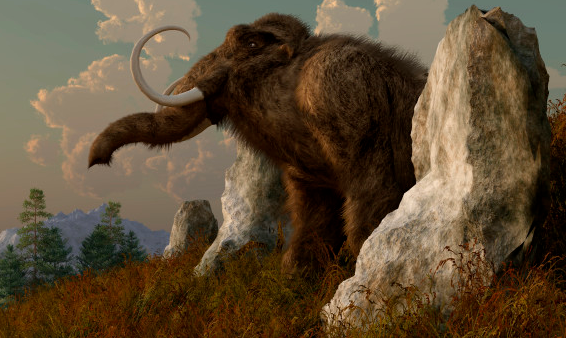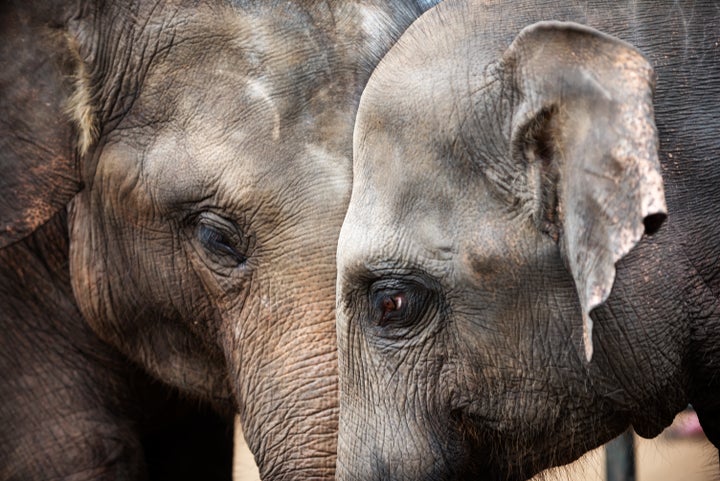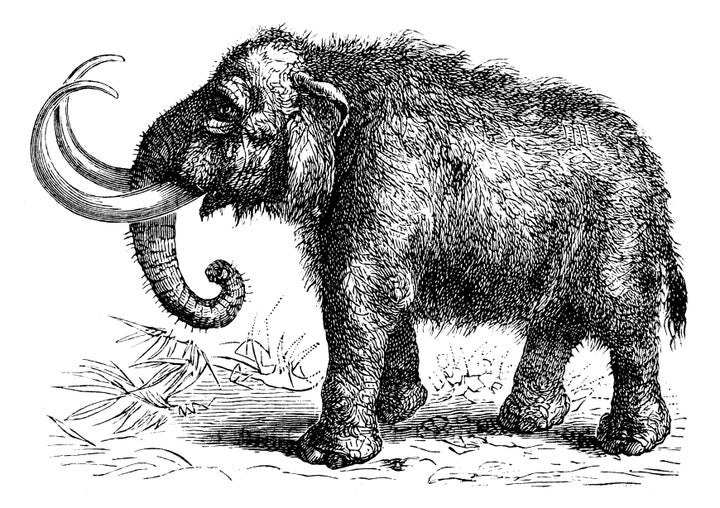Scientists working on resurrecting the woolly mammoth believe they are just two years away from creating a hybrid embryo.
If they succeed it will mark a turning point in plans to haul the ancient beast back from extinction by programming its key traits into an Asian elephant.
The bundle of cells would have genes for mammoth features such as shaggy long hair, thick layers of fat, and cold-adapted blood.

However, years more work lie ahead before any serious attempt can be made to produce a living creature.
The US scientists have ambitious plans to grow it within an artificial womb rather than recruit a female elephant as a surrogate mother, the Press Association writes.
Since starting the project in 2015 the researchers have increased the number of “edits” where mammoth DNA has been spliced into the elephant genome from 15 to 45.
Professor George Church, who heads the Harvard University team, said: “We’re working on ways to evaluate the impact of all these edits and basically trying to establish embryogenesis in the lab.

“The list of edits affects things that contribute to the success of elephants in cold environments.
“We already know about ones to do with small ears, sub-cutaneous fat, hair and blood, but there are others that seem to be positively selected.”
He added: “Our aim is to produce a hybrid elephant/mammoth embryo. Actually, it would be more like an elephant with a number of mammoth traits.
“We’re not there yet, but it could happen in a couple of years.”
The woolly mammoth roamed across Europe, Asia, Africa and North America during the last Ice Age and vanished some 4,500 years ago, probably due to a combination of climate change and hunting by humans.
Their closest living relative is the Asian, not the African, elephant.

“De-extincting” the mammoth has become a realistic prospect because of revolutionary gene editing techniques that allow the precise selection and insertion of DNA from specimens frozen over millennia in Siberian ice.
Prof Church helped develop the most widely used technique, known as CRISPR/Cas9, that has transformed genetic engineering since it was first demonstrated in 2012.
Derived from a defence system bacteria used to fend off viruses, it allows the “cut and paste” manipulation of strands of DNA with a precision not seen before.
Gene editing and its ethical implications is one of the key topics under discussion at the American Association for the Advancement of Science (AAAS) annual meeting taking place in Boston, Massachusetts.
Prof Church, a guest speaker at the meeting, said the mammoth project had two goals - securing an alternative future for the endangered Asian elephant and helping to combat global warming.
Woolly mammoths could help prevent tundra permafrost from melting and releasing huge amounts of greenhouse gas into the atmosphere.
“They keep the tundra from thawing by punching through snow and allowing cold air to come in,” said Prof Church. “In the summer they knock down trees and help the grass grow.”
A simulated ecosystem study has indicated that mammoths in Siberia could cause local temperatures to drop by up to 20C
In 2013 archaeologist Dr Alice Roberts warned that the prospect of bringing back the mammoth was “very questionable.”
She told the Radio Times: “Mammoths are herd animals and their environment no longer exists, so what are you bringing the animal back for?”
The scientists intend to engineer elephant skin cells to produce the embryo, or multiple embryos, using cloning techniques. Nuclei from the reprogrammed cells would be placed into elephant egg cells whose own genetic material has been removed. The eggs would then be artificially stimulated to develop into embryos.
Referring to the artificial womb, Prof Church said: “We hope to do the entire procedure ex-vivo (outside a living body). It would be unreasonable to put female reproduction at risk in an endangered species.
“We’re testing the growth of mice ex-vivo. There are experiments in the literature from the 1980s but there hasn’t been much interest for a while.
“Today we’ve got a whole new set of technology and we’re taking a fresh look at it.”
Prof Church predicts that age-reversal will become a reality within 10 years as a result of the new developments in genetic engineering.
Yet he believes CRISPR gene editing has been overhyped.
“I don’t think it’s the cat’s meow,” he said. “It’s just another technology. To say it’s changed everything is like saying the Beatles invented the ‘60s.”
Biologists briefly brought back the extinct Pyrenean ibex back to life in 2003 by creating a clone from a frozen tissue sample harvested before the goat’s entire population vanished in 2000.
The clone survived just seven minutes after birth, but it gave scientists hope that “de-extinction,” once a pipedream, could become a reality.
But Stuart Pimm of Duke University argued in an opinion piece in National Geographic that these efforts would be a “colossal waste”; if scientists don’t know where to put revived species that had been driven off the planet because their habitats became unsafe.
“A resurrected Pyrenean ibex will need a safe home,” Pimm wrote. “Those of us who attempt to reintroduce zoo-bred species that have gone extinct in the wild have one question at the top of our list: Where do we put them? Hunters ate this wild goat to extinction. Reintroduce a resurrected ibex to the area where it belongs and it will become the most expensive cabrito ever eaten.”
Pimm also worries that de-extinction could create a false impression that science can save endangered species, turning the focus away from conservation.
